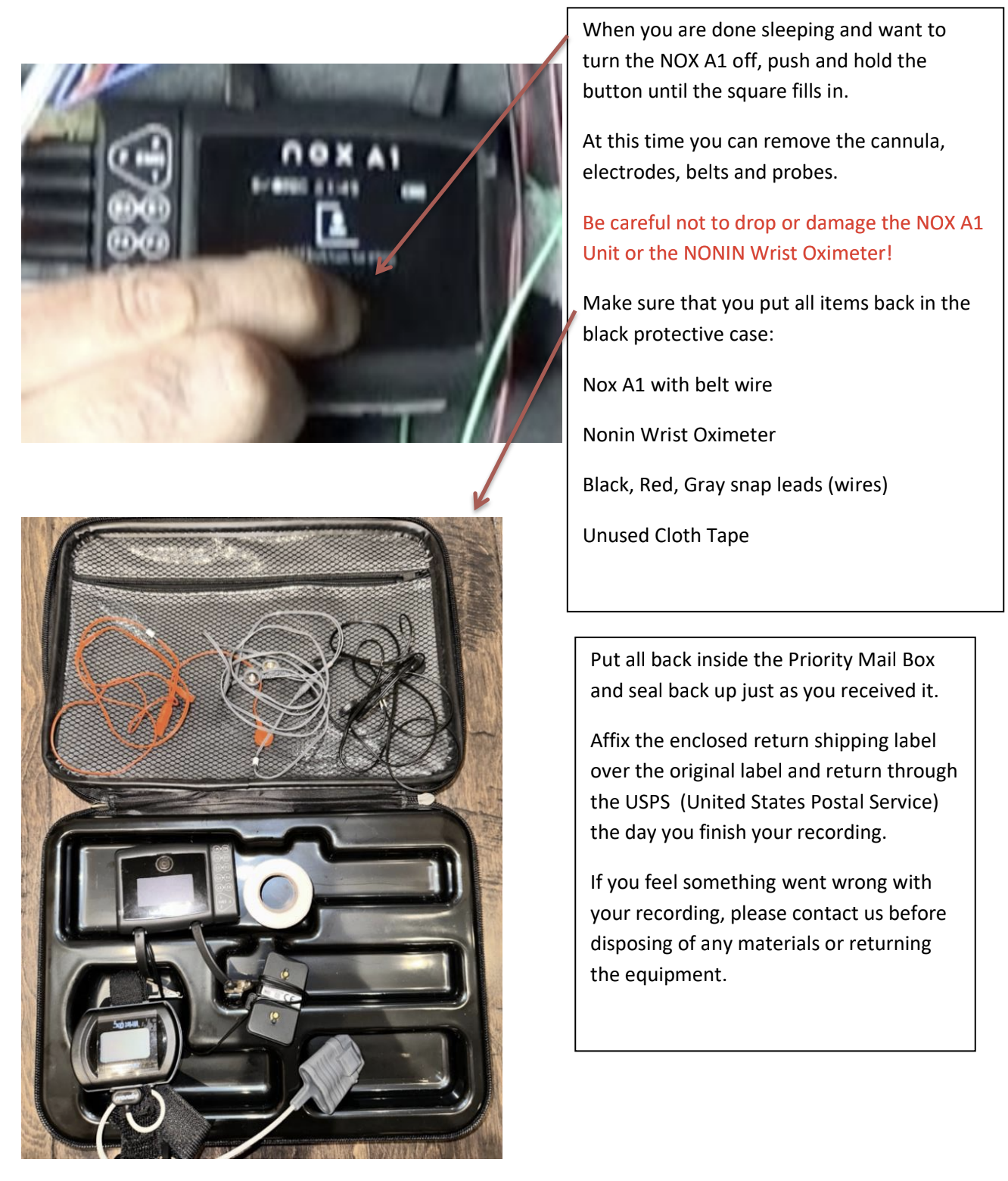Sensor Attachment Guide
Thank you for choosing AXG Sleep Diagnostics. The following steps will guide you through the set upprocess. Please note that the testing must be done the night the testing equipment is received.Step 1:
Clean and prep skin for electrode and sensor attachment.
Skin must be clean and free of lotions before attaching electrodes and sensors. Signal quality will be adversely affected if they are applied before a shower or bath. Limiting perspiration during the test is important. Keeping a fan on during the night is advisable. You should be in your sleep attire prior to attaching electrodes and sensors.
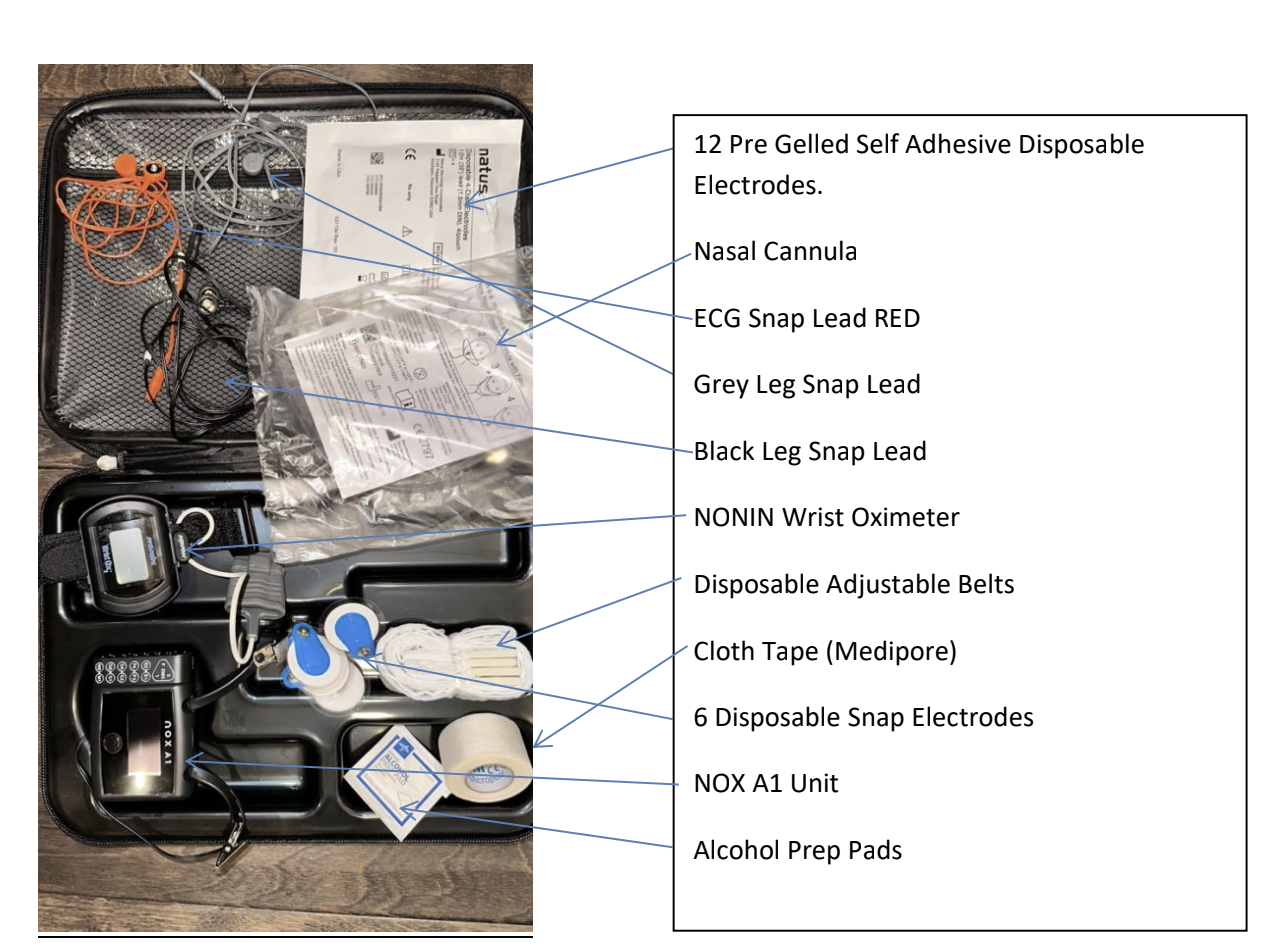
Step 2:
Attach and size the disposable belts and NOX A1 as shown in the images below.
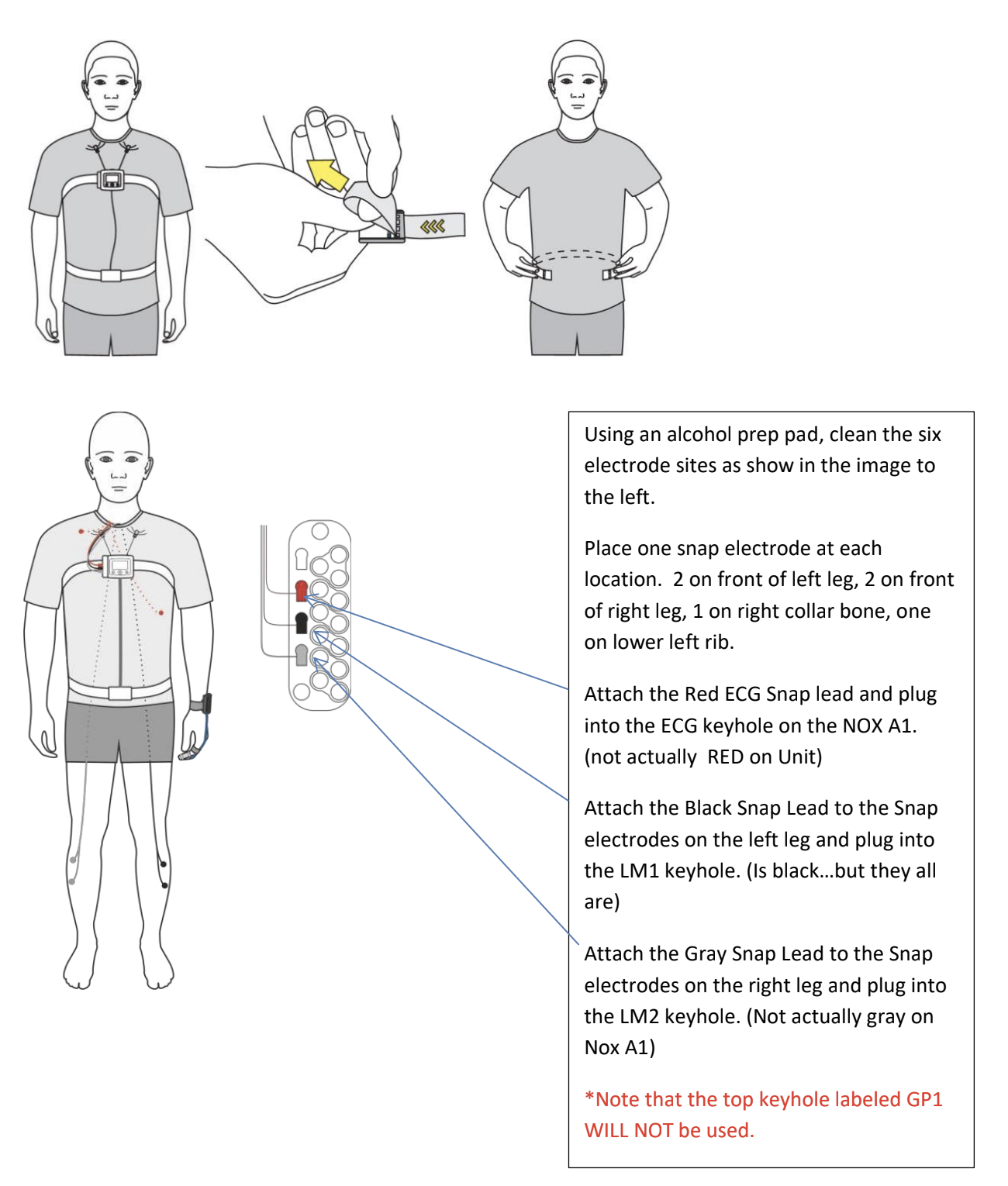
Step 3:
Prep and attach electrodes of the head and face.
Note: Electrode color is NOT important. Where the electrode plugs in is critical.
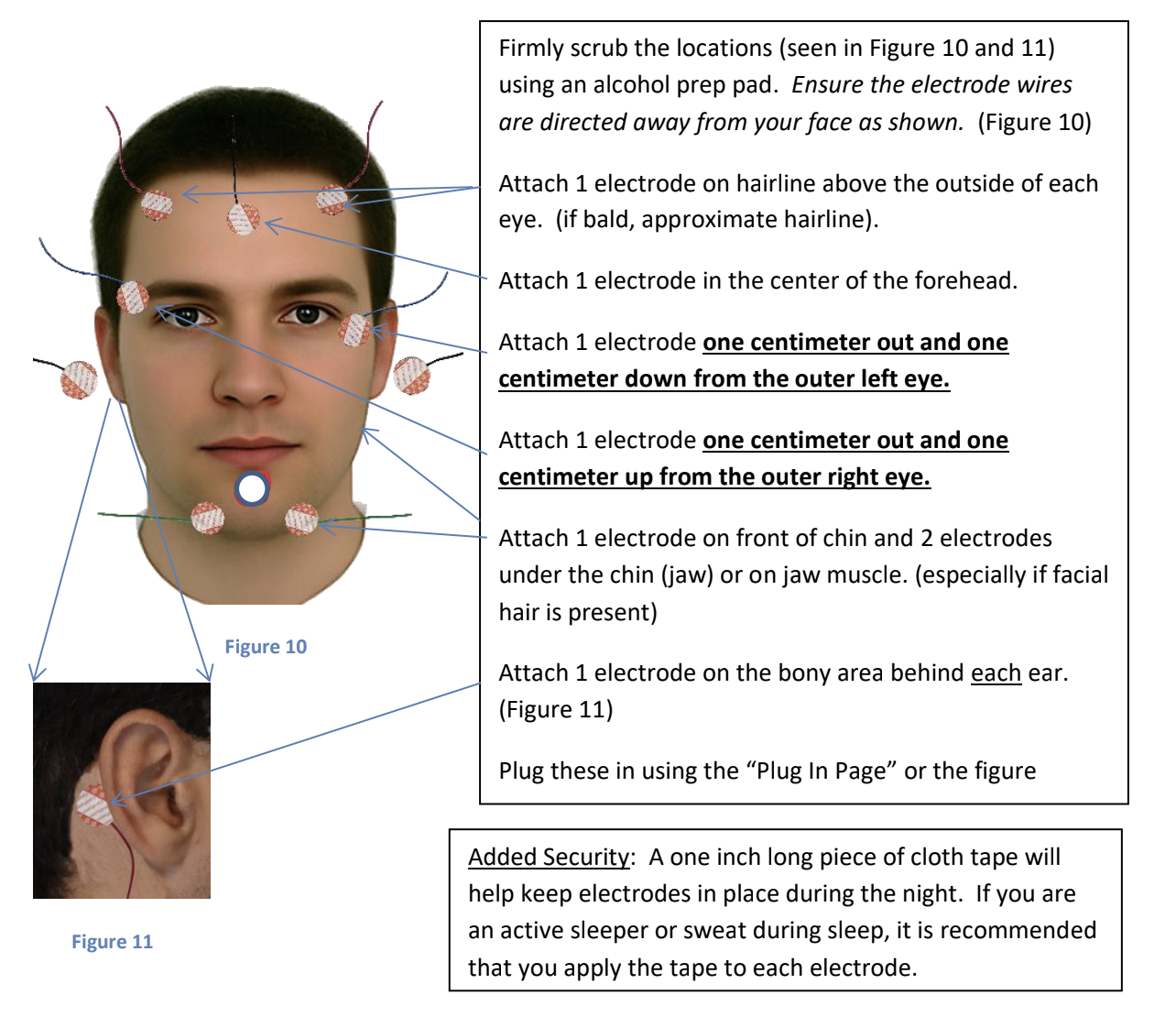
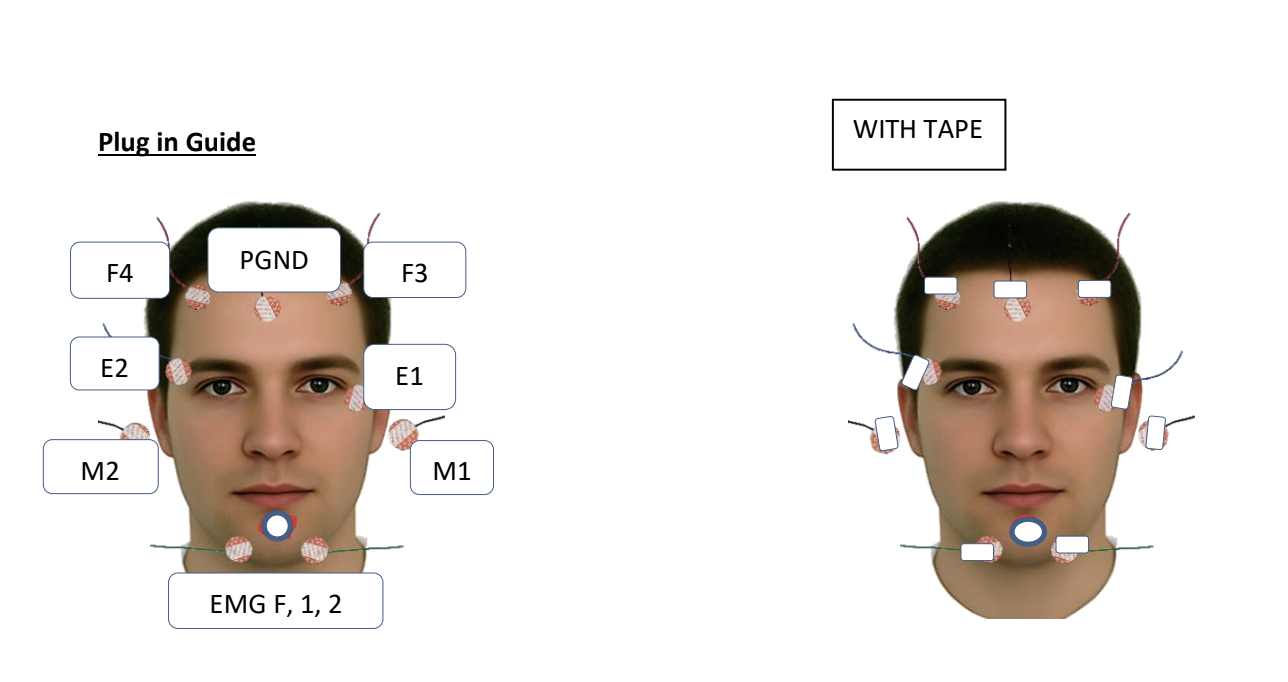
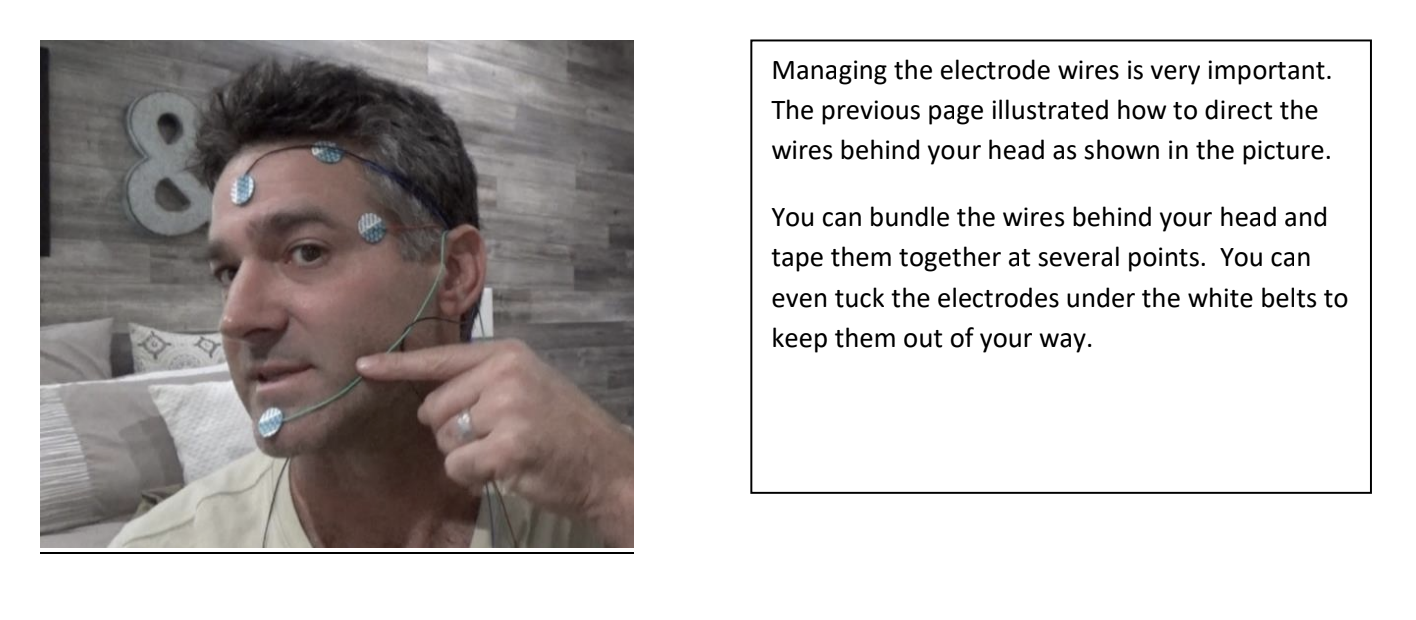
Step 4:
Nasal Cannula application
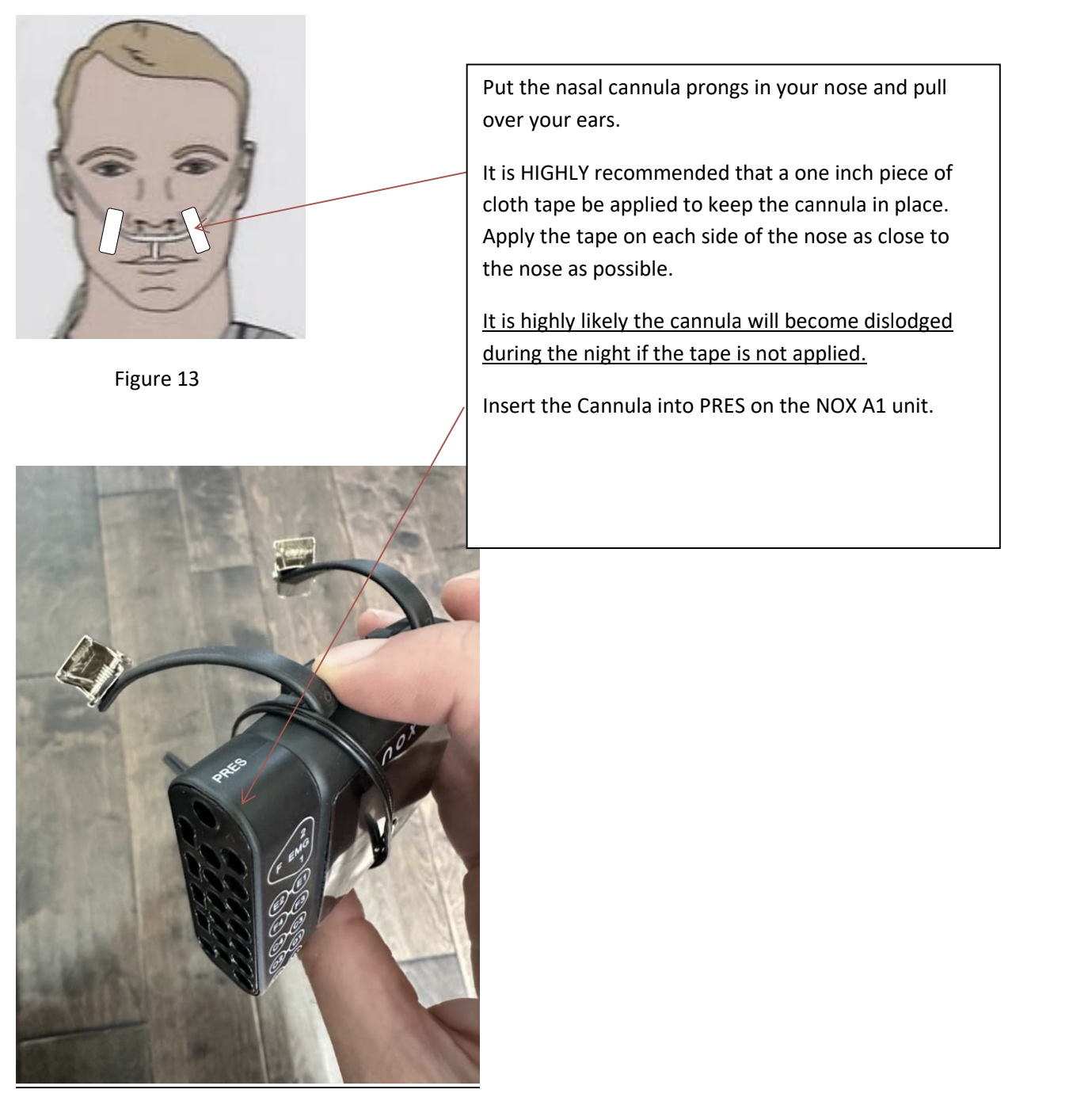
Step 5:
SPO2 (Finger) Probe application.
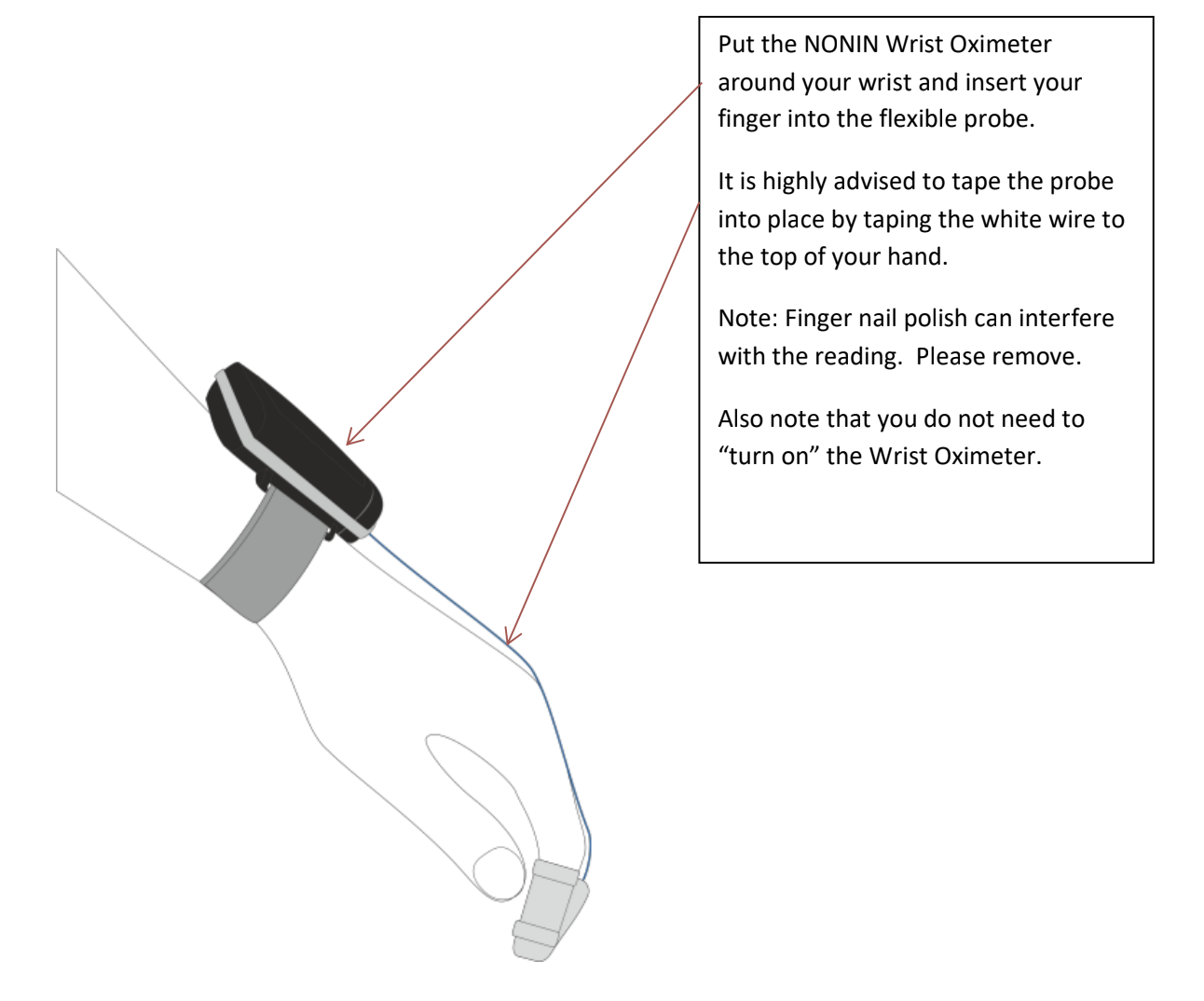
Step 6:
Starting the recording.
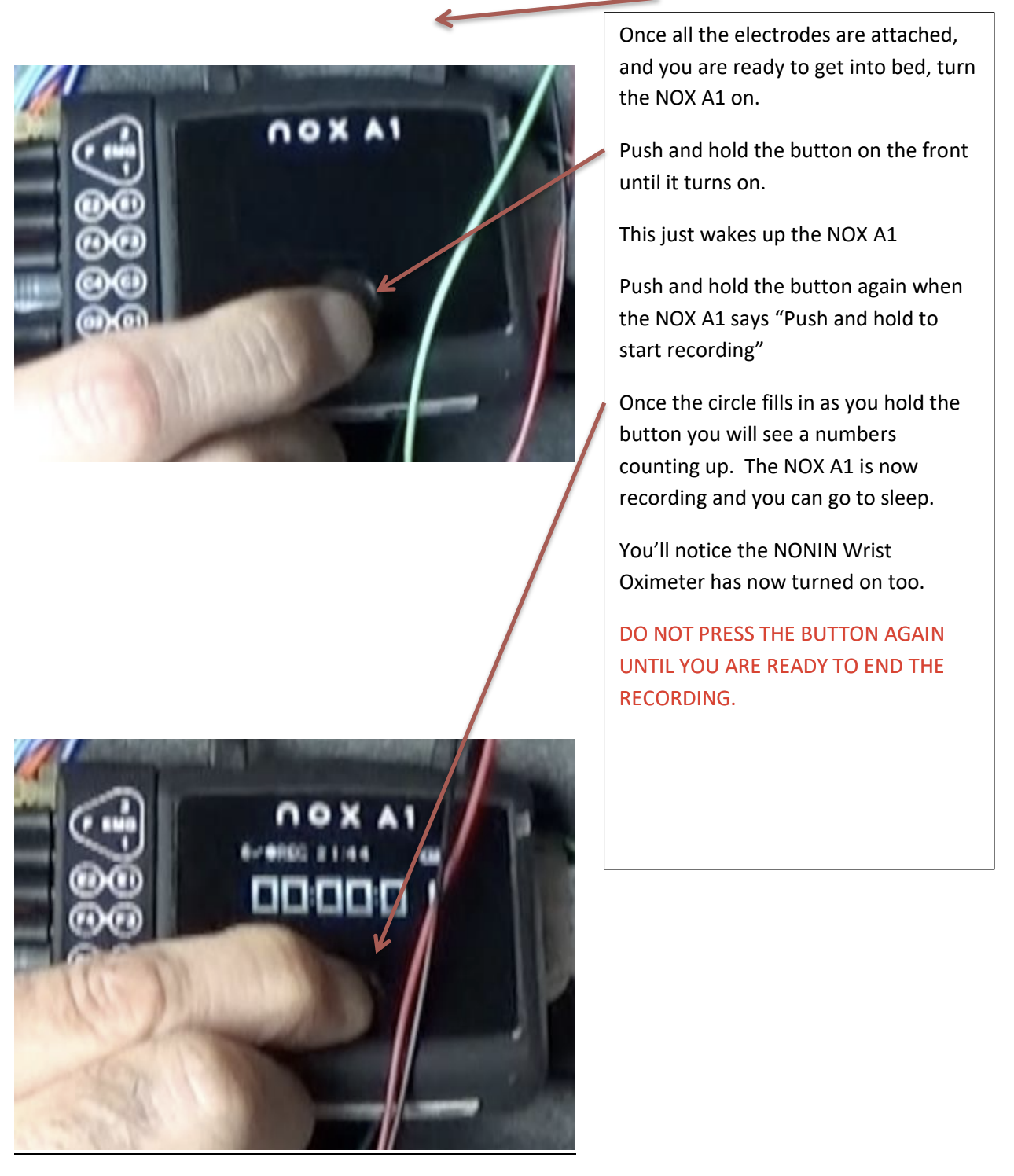
Step 7:
Ending recording.
